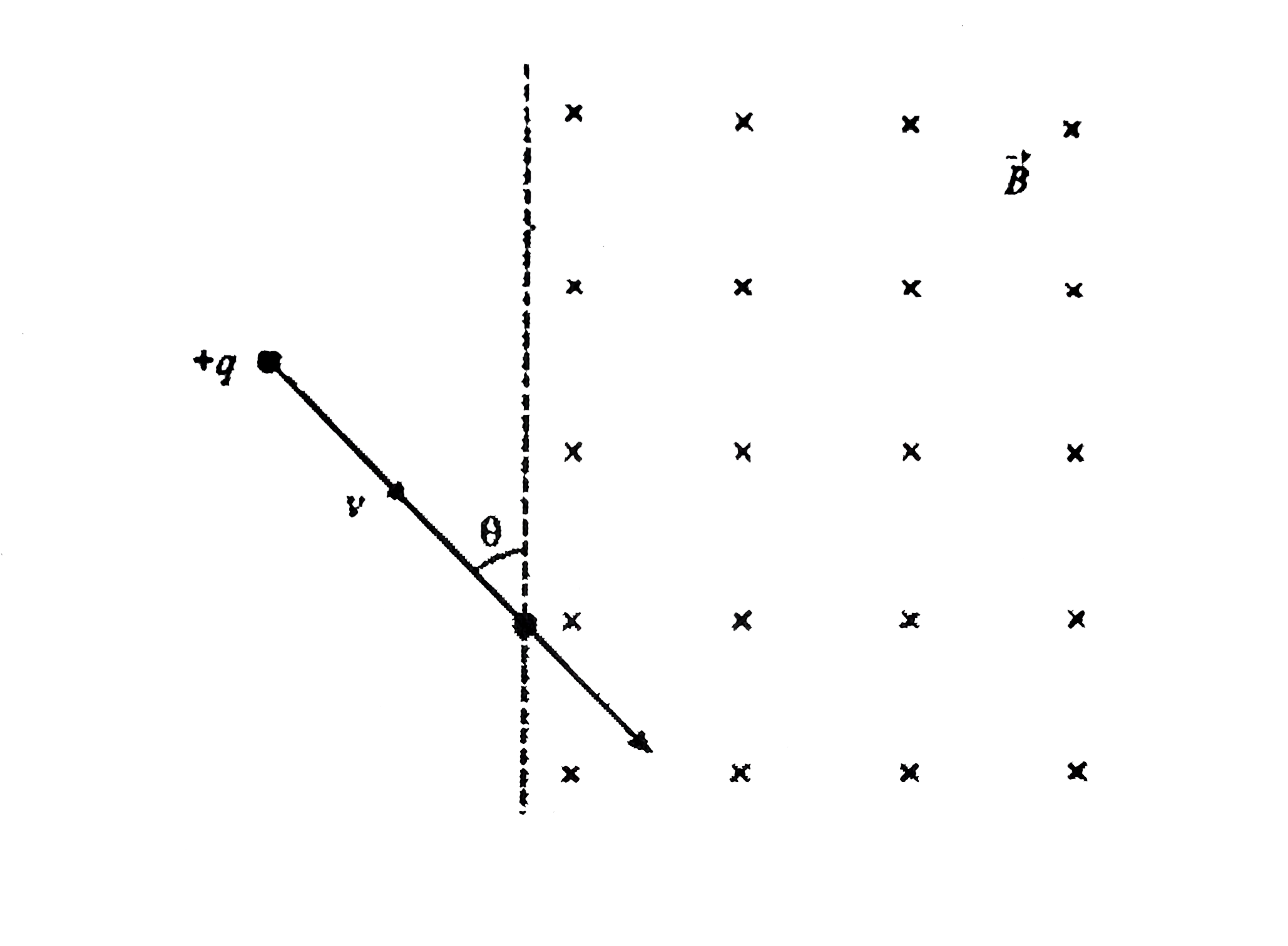A charged particle of mass m and charge q is accelerated through a potential differences of V volts. It enters of uniform magnetic field B which is directed perpendicular to the direction of motion of the particle. The particle will move on a circular path of radius
(√Vm2qB2)
2VmqB2
√2Vmq(1B)
√Vmq(qB)
The correct Answer is:C
To find the radius of the circular path of a charged particle moving in a uniform magnetic field, we will follow these steps:
1. Understanding the Problem:
A charged particle with mass m and charge q is accelerated through a potential difference V. It then enters a magnetic field B that is perpendicular to its motion.
2. Kinetic Energy from Potential Difference:
The work done on the charged particle by the electric field when it is accelerated through the potential difference V is given by:
W=qV
This work done is converted into kinetic energy (KE) of the particle:
KE=12mv2=qV
3. Solving for Velocity:
From the kinetic energy equation, we can express the velocity v of the particle:
12mv2=qV⟹mv2=2qV⟹v2=2qVm⟹v=√2qVm
4. Momentum of the Particle:
The momentum p of the particle is given by:
p=mv
Substituting the expression for v:
p=m√2qVm=√2mqV
5. Radius of Circular Motion:
The radius R of the circular path of a charged particle moving in a magnetic field is given by the formula:
R=mvqB
Substituting the expression for v:
R=m√2qVmqB=√2mqVqB
6. Simplifying the Expression:
We can simplify the expression for R:
R=√2mB⋅√qVq=√2mVqB
Final Result:
The radius of the circular path of the charged particle is:
R=√2mVqB
A charged particle with mass m and charge q is accelerated through a potential difference V. It then enters a magnetic field B that is perpendicular to its motion.
The work done on the charged particle by the electric field when it is accelerated through the potential difference V is given by:
W=qV
This work done is converted into kinetic energy (KE) of the particle:
KE=12mv2=qV
From the kinetic energy equation, we can express the velocity v of the particle:
12mv2=qV⟹mv2=2qV⟹v2=2qVm⟹v=√2qVm
The momentum p of the particle is given by:
p=mv
Substituting the expression for v:
p=m√2qVm=√2mqV
The radius R of the circular path of a charged particle moving in a magnetic field is given by the formula:
R=mvqB
Substituting the expression for v:
R=m√2qVmqB=√2mqVqB
We can simplify the expression for R:
R=√2mB⋅√qVq=√2mVqB
The radius of the circular path of the charged particle is:
R=√2mVqB
Topper's Solved these Questions
- BOOK - DC PANDEYCHAPTER - MAGNETICSEXERCISE - INTRODUCTORY EXERCISE1videos
MAGNETICS
- BOOK - DC PANDEYCHAPTER - MAGNETICSEXERCISE - SUBJECTIVE_TYPE1videos
MAGNETICS
- BOOK - DC PANDEYCHAPTER - MAGNETICSEXERCISE - MCQ_TYPE1videos
MAGNETICS
- BOOK - DC PANDEYCHAPTER - MAGNETIC FIELD AND FORCESEXERCISE - Medical entrance s gallery59videos
MAGNETIC FIELD AND FORCES
- BOOK - DC PANDEYCHAPTER - MAGNETISM AND MATTEREXERCISE - Medical gallery1videos
MAGNETISM AND MATTER
Similar Questions
A charged particle of mass m and charge q is accelerated through a potential difference of V volts. It enters a region of uniform magnetic field which is directed perpendicular to the direction of motion of the particle. Find the radius of circular path moved by the particle in magnetic field.
View SolutionA charge particle of mass m and charge q is accelerated by a potential difference V volt. It enters in a region of uniform magnetic field Bas shown in figure-4.93. Find the time after which it will come out from the magnetic field.
 View Solution
View Solution
Knowledge Check
- Question 1 - Select One
A particle of mass 'm' and charge 'q' is accelerated through a potential difference of V volt, its energy will be
AqVBmqVC(qm)VDqmV - Question 2 - Select One
A particle of mass 'm' and charge 'q' is accelerated through a potential difference of V volt, its energy will be
AqVBmqVC(qm)VDqmV - Question 3 - Select One
A particle of mass m carrying charge q is accelerated by a potential difference V. It enters perpendicularly in a region of uniform magnetic field B and executes circular arc of radius R, then qm equals
A2VB2R2BV2BRCVB2RDmVBR
An electron after being accelerated through a potential difference of 100 V enters a uniform magnetic field of 0⋅004T, perpendicular to its direction of motion. Calculate the radius of the path described by the electron.
View SolutionA charged particle q moving in a straight line is accelerated by a potential difference V. It enters a uniform magnetic field B perpendicular to its path. Deduce in terms of V an expression for the radius of the circular path in which it travels.
View SolutionA charged particle, having charge q1 accelerated through a potential difference V enters a perpendicular magnetic field in which it experiences a force F. It V is increased to 5V, the particle will experience a force
View SolutionA charged particle , having charge q accelerated through a potential difference V enters a perpendicular magnetic field in which it experiences a force F. If V is increased to 5V, the particle will experience a force.
View SolutionA charge particle after being accelerated through a potential difference V enters in a uniform magnetic field and moves in a circle of radius r. If V is doubled, the radius of the circle will become
View Solution

